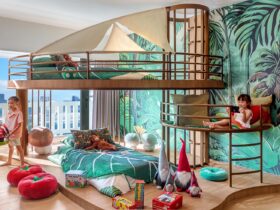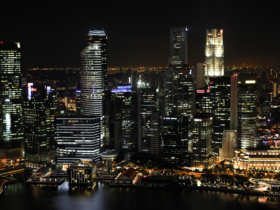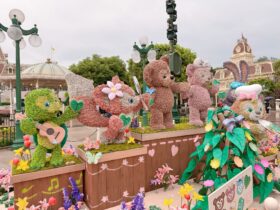Kampong Ayer in Brunei preserves thousands of years of heritage with 40 villages built on wooden structures over the water

Photo: Milosz_M / Shutterstock.com

One of the great things about travel is to see how the locals live and the lifestyles that they share.
In Brunei, I am fascinated by a large community comprising about 40 villages – with about 40,000 inhabitants – that reside on stilt houses, wooden walkways and planks over the Brunei River. It’s an entire town built on water in an area that is part of the capital Bandar Seri Begawan, after Brunei Bay.
Kampong Ayer is the world’s largest water village and the Portuguese explorers of yore called it “the Venice of the East”. It is a feat of construction that encompasses homes, mosques, shops, a fire station, restaurants, schools and a hospital, all linked together by a 36-km network of boardwalks, planks and wooden alleys.

Photo: Sophie James / Shutterstock.com
Modern Amenities in Traditional Living
If you think Kampong Ayer is an old, derelict village, think again. It is modern and thriving, with Internet access, air-conditioning, satellite TV, plumbing and an electrical system. Water taxis and personal boats ply the waters to bring passengers to and fro.
Approaching Kampong Ayer from a distance on your boat, it looks like a typical Malay wooden kampong that’s spread out like a floating mirage on the waters. Chickens run around and colourful laundry hangs out to dry, flapping in the breeze.
As you get closer, you’ll discover unique architectural heritage. Each home and building in Kampong Ayer has its own creative design and layout in wood.

Rich Food and Fresh Produce
People have been living in Kampong Ayer for more than 1,300 years, and it used to be one of the most important centres for trade in Borneo. Today, most of the inhabitants make their way to the local market to sell or trade traditional cooked food and produce such as fruits, vegetables, and traditional herbs for medicinal use, as well as handicrafts.
If you’re lucky to be invited for lunch by one of the inhabitants into their water home you’ll most likely enjoy simple seafood dishes, fragrant rice, beef rendang, vegetables, nasi lemak and puteri nanas, and ambuyat, a gooey ball of sago starch, which is wrapped around a bamboo fork and dipped into a sour fruit sauce.
Brunei food is somewhat similar to that of neighbouring Malaysia and Indonesia, with additional influences from India, China, Thailand and Japan, via trade. It is spicy, incorporating chilli and coconut milk.
For dessert there is ice kacang, goreng pisang and kelupis, sticky rice wrapped in banana leaves.
The inhabitants of Kampong Ayer are friendly and hospitable, and resourceful. They are proud of their heritage and home on the water. You would feel proud for them too if you were to pay them a visit.
By Freda Saunders
ADVERTISEMENTS










Leave a Reply